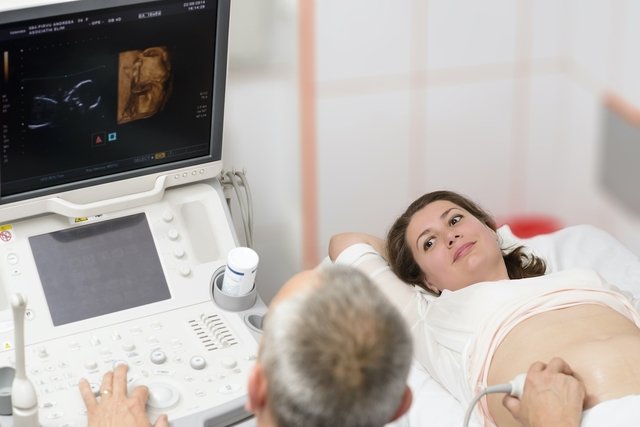Anterior placenta and posterior placenta are medical terms used to describe the location of the placenta has attached in the uterus. they are not related to possible complications for pregnancy.
Knowing the location is important because it helps to predict when fetal movements may be felt. Women with an anterior placenta, for example, will typically feel fetal movements later on in the pregnancy, while a posterior placenta allows for movements to be felt earlier on.
The location of the placenta is confirmed through ultrasound during routine fetal exams.

When fetal movements are felt
Fetal movements can normally be felt between 18 and 20 weeks of pregnancy, if it is the first child, or 16 to 18 weeks of pregnancy, in subsequent pregnancies.
How the placenta affects fetal movements
Depending on the location of the placenta, the intensity and onset of fetal movements may vary:
Anterior placenta
An anterior placenta is located at the front of the uterus and can be attached to either the left or right side of the body.
An anterior placenta does not affect the baby's development, however, it is common for fetal movements to be felt later than normal, closer to 28 weeks of gestation. This happens because the placenta is located in the front of the body, and it cushions the baby's movements, making them more difficult to feel.
If after 28 weeks of gestation the baby's movements are not felt, it is important to consult your OB for further assessment.
Posterior placenta
A posterior placenta is located at the back of the uterus and can be attached to either the left or right side of the body.
Since the posterior placenta is located at the back of the body, it is common for the baby's movements to be felt earlier as compared to an anterior placenta.
If there is a decrease in fetal movements compared to the baby's normal pattern, or if movements are not felt, you should see your OB for further assessment.
Fundic placenta
A fundal placenta is located at the top of the uterus and, like the posterior placenta, the baby's movements are felt, on average, between 18 and 20 weeks of pregnancy during first pregnancies or 16 to 18 weeks, in subsequent pregnancies.
The warning signs are the same as those for the posterior placenta, that is, if there is a reduction in fetal movements, or if they take longer to appear, you should consult an OB for assessment.
Can placenta location pose any risks?
A posterior, anterior or fundal placenta do not pose any risks to pregnancy, however, the placenta can also be fixed, totally or partially, in the lower part of the uterus, and close to the opening of the cervix. This is also referred to as placenta previa. In this case there is a risk of premature birth or bleeding, and it is important for more close monitoring to be carried out by the OB.
